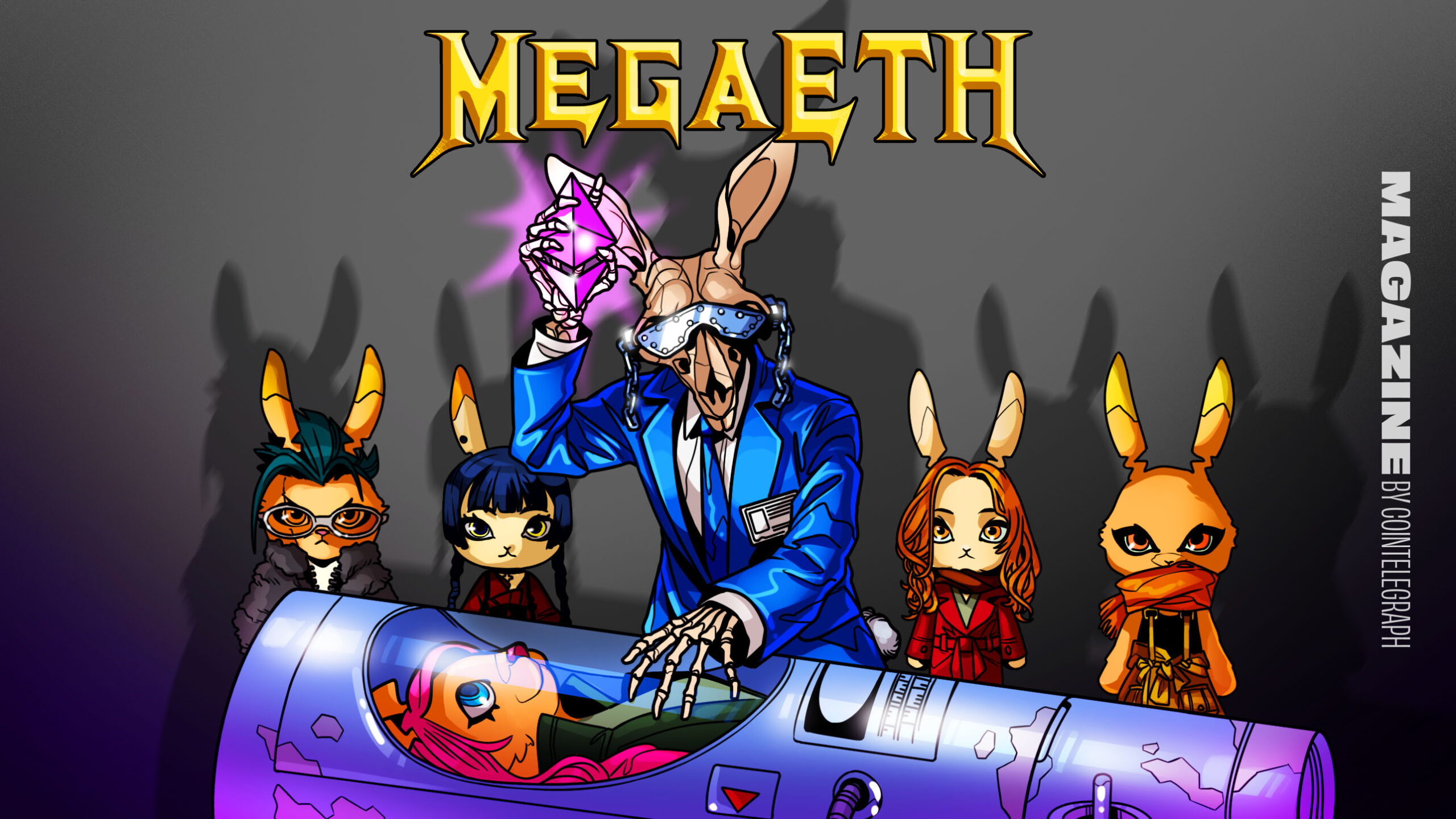The hype machine building up around Ethereum layer-2 MegaETH cla
  |
The hype machine building up around Ethereum layer-2 MegaETH claims it’s the answer to Ethereum’s scaling and sentiment problems.
Prioritizing speed over decentralization, the new L2 will apparently feel as seamless as using a Web2 app or a centralized exchange, and run an order of magnitude faster than all the other rollups and Solana combined. In short, the aim is to “Make Ethereum Great Again.”


It’d be easy to dismiss this as pure hyperbole, but MegaETH is backed by some of the biggest names in the industry, including Ethereum co-founders Vitalik Buterin and Joe Lubin, EigenLayer’s Sreeram Kannan, OG influencer Cobie and even Solana maxi Mert Mumtaz.
Due to the launch of its public testnet in the coming weeks, the EVM-compatible chain has reportedly hit 15,000 transactions per second (TPS) in private testing while using 60x more gas (1.5 gigagas) than existing Ethereum rollups like Base. That gas figure is set to double when the proprietary parallelization engine is switched on, and the aim is to scale the L2 all the way up to 100,000 TPS and 10 gigagas.
MegaETH also claims execution times of 10 milliseconds or less, which is well under the 250ms of the fastest existing rollup, Arbitrum.
Centralized scaling: MegaETH’s controversial approach
To achieve such heroic levels of scaling, MegaETH has cut a lot of corners — the team prefers the term “optimizations” — by removing some of the key components that make blockchains, blockchains.


Unlike other L2s and rollups, it has no plans to ever decentralize the sequencer, which allows it to use a bunch of high-end equipment to ramp up throughput. Data storage has been outsourced to the less secure and as yet non-battle-tested EigenDA rather than Ethereum, and the L2 is missing plans for a crucial component of the “don’t trust, verify” ethos, which is consensus (where all the participants in the network agree on the state of the blockchain). All L1s require this, but L2s have the ability to opt-out.
Delphi Digital researcher Prasad Mahadik explains that decentralized consensus slows blockchains down. “The speed of light acts as an ultimate bottleneck and the more nodes there are dispersed, the more time it takes to get to consensus,” he says.
“MegaETH, being an L2 has only one sequencer, and doesn’t have constraints of hardware requirements,” Mahadik says.
MegaETH vs. Solana
It’s hard to see MegaETH as anything else but Ethereum’s L2 answer to Solana, which has been eating Ethereum’s lunch for the past two years with its faster, cheaper chain that uses expensive equipment in data centers rather than Ethereum’s maximally decentralized network, which is designed to be able to run on Raspberry Pis.
Crypto influencer Bread, the project’s public face and head of growth, says that Ethereum’s focus on decentralization above all has left L2 leaders like Base’s Jesse Pollak desperate to scale faster.
“He’s literally pleading with Ethereum developers and saying, guys like, we’re getting our ass kicked here by Solana,” says Bread, who says SOL’s prioritization of scalability was influential in MegaETH’s development.


“We have made design decisions that allow us to scale vertically, which to me is kind of similar to Solana,” he says. “We want to be super big, we want to be super fast, and because we’re doing it as an L2 construction as opposed to doing it as an L1, it allows us to make even more opinionated decisions on how to enable some of those upper bounds of performance.”
Being an L2 arguably allows it to make even more sacrifices to the scaling gods than Solana can, as it still retains the security of Ethereum’s base layer.
“We make some key trade-offs to allow us to be even better than Solana — purely better than all L1s in some regards.”
But has MegaETH got the balance right? And if these tradeoffs are able to attract a critical mass of users, what will that mean for competing L2s like Abritrum, Base, Optimism and Starknet that are currently constrained by Ethereum’s data blob capacity? Will they be forced to abandon their own plans to decentralize, or to use alternative data availability (alt DA) in order to compete with an L2 running 500 times faster?
Arbitrum and Starknet both declined to comment for this story.
How MegaETH began
The project was founded by Stanford computer scientist Yilong Li three years ago after he read Vitalik Buterin’s 2021 blog post about how a hypothetical 10,000 transaction-per-second chain with centralized block production could become “acceptably trustless and censorship-resistant.” He was also inspired by a 2022 post from Plaintext Capital about using data…
cointelegraph.com
